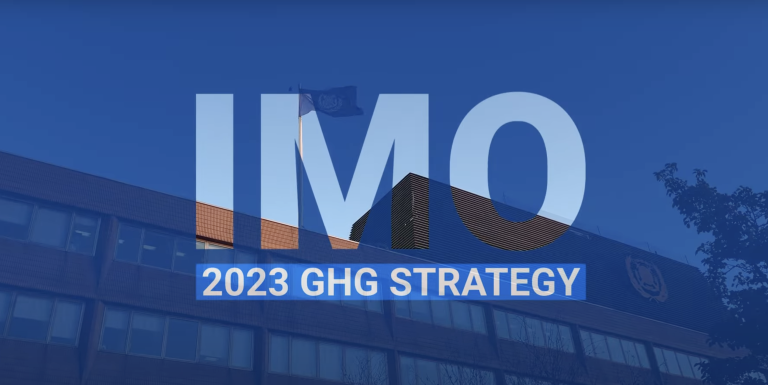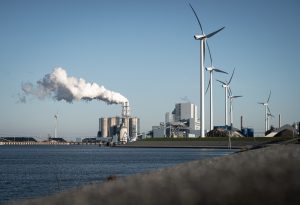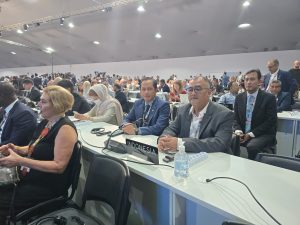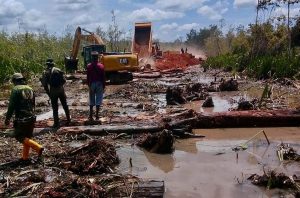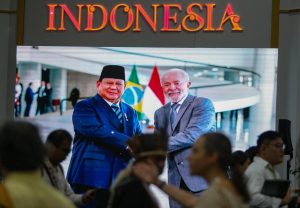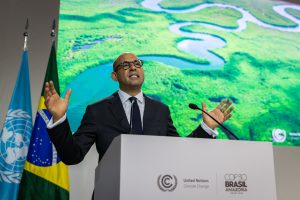Jakarta—The International Maritime Organization (IMO) opens a crucial round of talks in London on Monday, March 31, that could lead to the world’s first global carbon pricing mechanism for the shipping sector. The shipping sector is one of the most polluting industries globally, responsible for nearly 3% of global greenhouse gas emissions.
Delegates from IMO member states are gathering in London for a two-week session that begins with technical discussions this week, before final negotiations at the 83rd Marine Environment Protection Committee (MEPC 83), scheduled for 7–11 April. The talks will finalise measures under the IMO’s 2023 Revised Greenhouse Gas (GHG) Strategy, which sets out targets to reduce emissions by 30% by 2030, 80% by 2040, and to reach net-zero by 2050.
At the heart of the negotiations is the proposed carbon levy on shipping emissions—a policy long championed by a growing coalition of over 60 countries, including Pacific Island nations and Caribbean, European, African, and Asian states. The coalition argues that a flat-rate carbon price is essential to closing the cost gap between fossil fuels and zero-emissions technologies and generating revenues for an equitable transition to clean energy.
Albon Ishoda, Marshall Islands Special Envoy for Maritime Decarbonization, said: “These final talks are a test of IMO’s credibility. Without a universal levy, the IMO’s climate targets are meaningless. This is the fastest, most effective, and lowest-cost way to ensure a just and equitable transition, where no one is left behind. Delays cost lives. The time for action is now.”
Proposals on the table range from USD 18 to USD 150 per tonne of greenhouse gas (GHG) emissions, with some experts suggesting a higher range of USD 150–300/tonne would be most effective in minimising economic disruption and promoting global equality. A recent UNCTAD study supports this, highlighting that a well-designed levy could smooth the path for shipping decarbonisation while protecting global GDP growth.
Revenue distribution remains a key sticking point. Small Island Developing States (SIDS) and Least Developed Countries (LDCs) are calling for an ambitious pricing mechanism that could generate funds not just for the maritime transition, but also for broader climate adaptation and mitigation — offering a potential source of climate finance separate from the USD 1.3 trillion New Collective Quantified Goal (NCQG) agreed at COP29 in Baku.
The World Bank estimates that a USD 100/tonne levy could raise up to USD 60 billion annually, providing a significant financial tool for addressing climate vulnerabilities in developing nations.
However, not all IMO members are on board. A small but influential group of countries — including China, India, Brazil (host of COP30), Saudi Arabia, and South Africa — favours a weaker approach based on carbon credit trading systems. Critics argue that such mechanisms fail to deliver the emissions cuts needed to meet the IMO’s targets.
“It’s no surprise that China, Brazil, India, South Africa, and Saudi Arabia oppose the levy – they’ve made their stance clear, and that’s unlikely to change,” said Li Shuo, Director of China Climate Hub, Asia Society Policy Institute (ASPI).
He said, “This year, BRICS countries, along with the EU, will be in the spotlight – and these talks are just one of many moments that will test their diplomatic weight. With the US shifting focus, these two blocs must step up, or they risk losing credibility in the eyes of key trade partners across the Pacific, Africa, and Latin America – many of whom are backing the levy.”
This week’s discussions mark a critical test of the IMO’s climate credibility. The 2023 GHG Strategy outlines a vision for zero or near-zero emission fuels to make up at least 5% — ideally 10% — of the industry’s energy mix by 2030. It includes a goal to cut carbon intensity by 40% in the same timeframe. It also references aligning with the Paris Agreement’s long-term temperature targets.
As the COP30 Presidency prepares to release a major report on the USD 1.3 trillion climate finance goal later this year, the outcomes of the IMO talks will help shape the future of climate funding and the speed of the global shipping transition. (nsh)
Banner photo: IMO Youtube account screenshot

